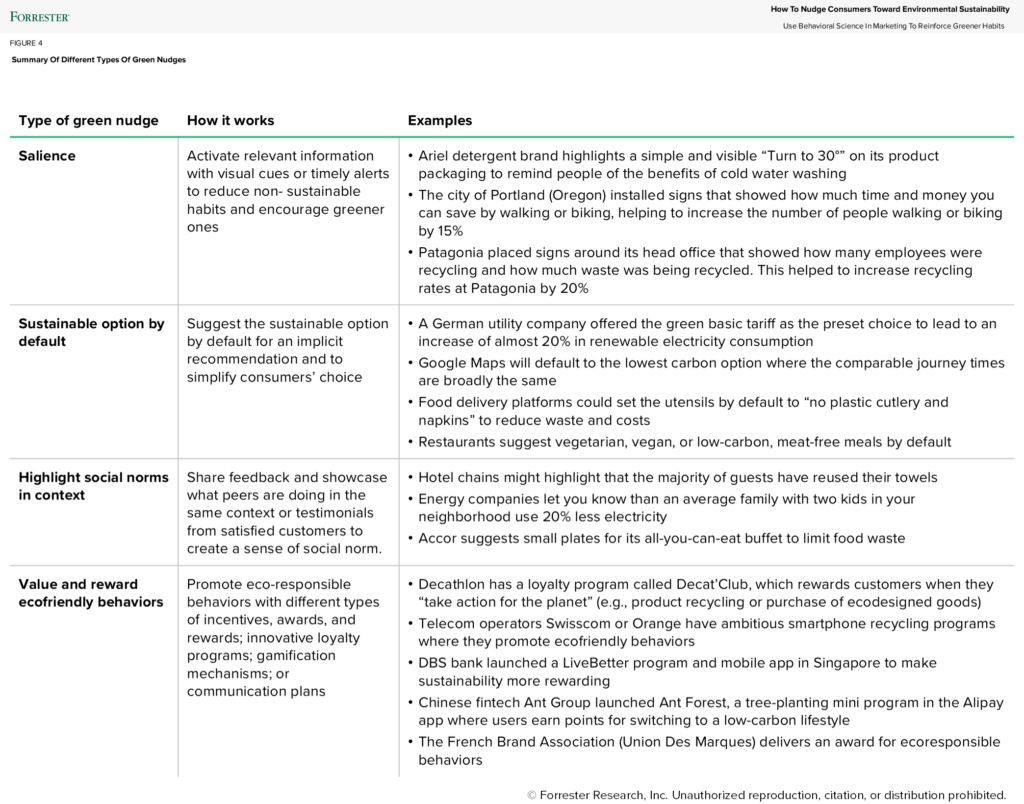How To Nudge Consumers Toward Environmental Sustainability
Behavioral science aims to develop a deep understanding of human decision-making in context. It helps explain customer mental models and why people don’t always act the way they say they do. This is especially important when it comes to environmental issues: Many consumers would like to adopt greener behaviors but struggle to do so due to complex barriers to sustainable consumption. Behavioral science is an efficient approach to nudge consumers toward greener consumption habits.
In a new report based on many interviews, I summarize the key steps and principles to structure a green nudge approach and some best practices:
- Tap into positive social pressure and influence.
- Use visual clues and timely reminders to reinforce salience.
- Use default options.
- Value and reward eco-friendly behaviors.

Avoid Green Nudge Pitfalls
Green nudges alone can’t evolve consumer behaviors toward more sustainable consumption. They must be part of a broader behavioral science approach. Before even encouraging consumers to evolve their behaviors, you must first fix the basics of your sustainability approach and offer sustainable goods and services. As they seek to encourage green consumer behavior, marketers must:
- Beware of “sludge,” or the ethical risk of consumer manipulation.
- Acknowledge that green nudges take time to scale.
- Avoid blaming the consumer.
- Combine an individual approach with ecosystemic changes.
Clients who want to know more about green marketing and behavioral science can access our new report, How To Nudge Consumers Toward Environmental Sustainability, and schedule a guidance session with me.
